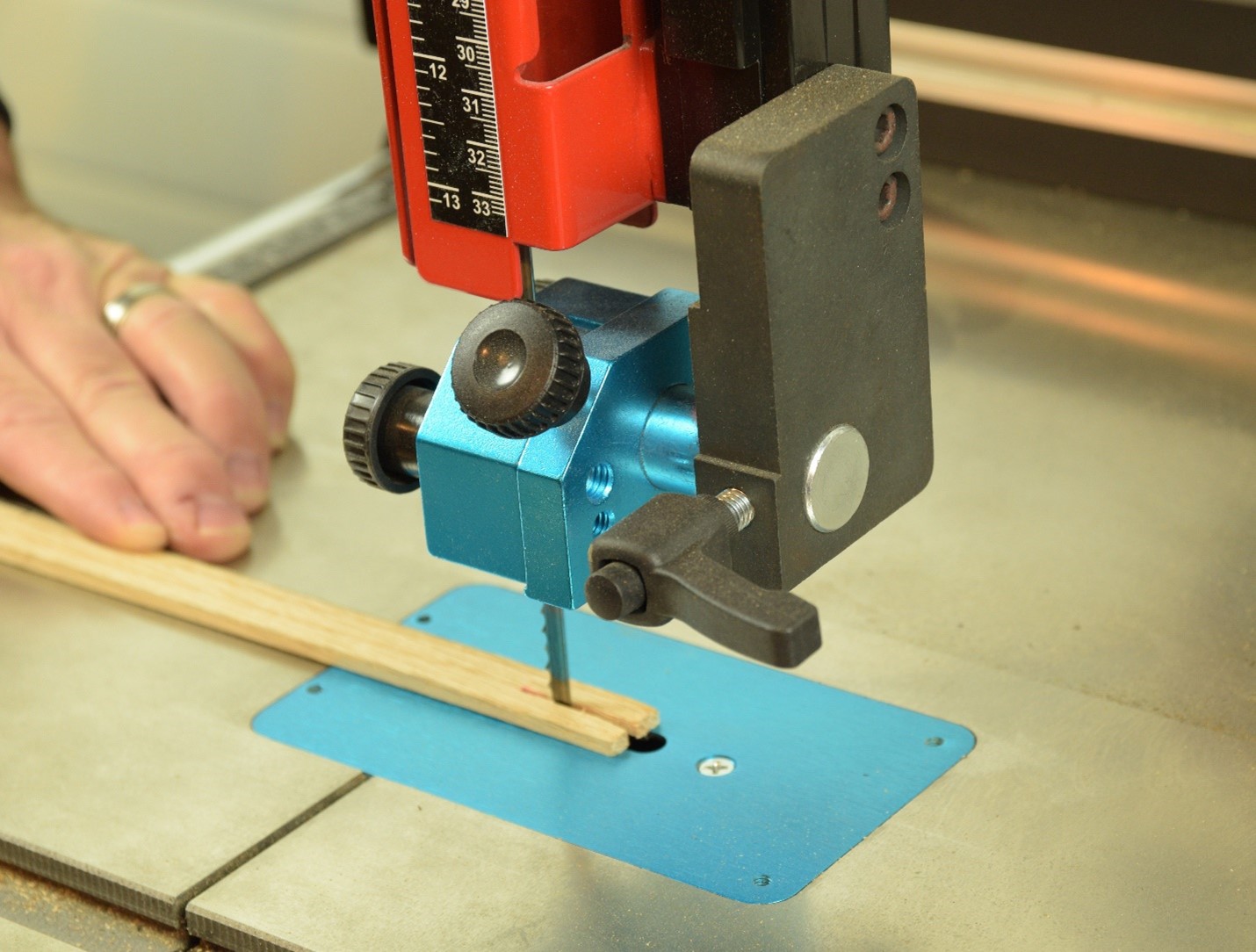A bandsaw is the perfect tool for cutting curves for all sorts of woodworking projects. I like to build arts and crafts style furniture, and many pieces have a gentle curve that graces the lower stretcher. It’s a singular detail that makes the otherwise rectilinear furniture more pleasing to the eye. But sometimes it’s hard to strike a fair curve in the first place. Afterall, you want a true curve drawn with a pencil before heading over to the bandsaw.

I have experimented for years on different bowstring contraptions to draw a fair curve. They all sort of look like a kids’ bow and arrow. Some have turnbuckles to adjust the curve, while others have plastic sliders like you’d find on a sleeping bag drawstring. Ranging from intricate to stone-simple, they all seem to do the job. However, the fairing stick I reach for most is the simplest of all. It’s made from a thin strip of hardwood, about 1/8” thick x ¾” wide. It uses Ruby Twine, a traditional upholsterer’s twine, to set the curve of the hardwood strip. I do a lot of chair upholstery in the shop, and consequently always have some Ruby Twine on hand. It has a somewhat waxy feel, and holds a knot well. That property makes it great to use for this fairing stick. I highly recommend you give Ruby Twine a try!

Slot both ends of the wooden strip at the bandsaw to receive the twine. Make the kerf thinner than a tablesaw blade, and slightly “V-Shaped.” Tie a knot at one end of the twine, and slide it into one slot. That will be the fixed end of the twine. Now bend the strip to the desired shape and pull the twine into the other slot. The Ruby Twine nestles down into the V-shaped slot for an easy friction fit. Now you’re ready to draw the proper curve on your workpiece. If you find the radius of the curve isn’t quite right, just release the string from the slot, and reset the curve. In that way, this little jig is infinitely variable.


The slots are easy to cut at the bandsaw. Just make a couple passes until the twine fits snugly with hand pressure. Your goal is a slot that’s wider than a bandsaw blade, but narrower than a full-kerf tablesaw blade.

Of course, there is a limit to the size and type of curve that one fairing strip can draw. At some point, the radius will be too tight for the wooden strip and it could break. Luckily I’m usually after gentle curves, like the ones you’d see on the bottom rail of a Gustav Stickley dresser or Charles Limbert table. Still, it’s handy to have two or three of these bending aids at close reach in the shop. I usually make them about 18”, 24” and 36” long for various projects. Plus, they’re easy to replace if they ever lose their springy curve. In fact, you’ve probably got a stack of thin strips on your tablesaw from the last project!
So, if you’re in the habit of using curved shapes in your woodworking projects, or would like to start incorporating more curves… give this simple fairing strip a try.




